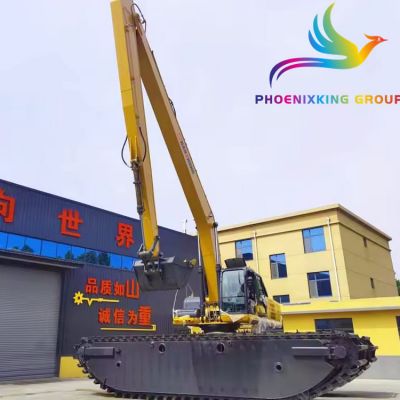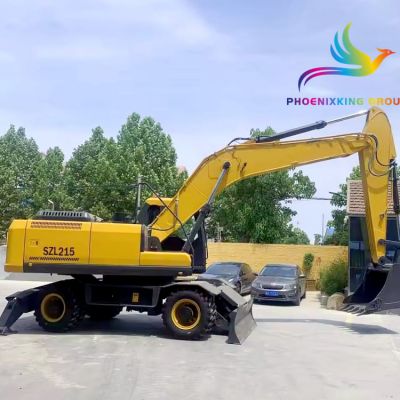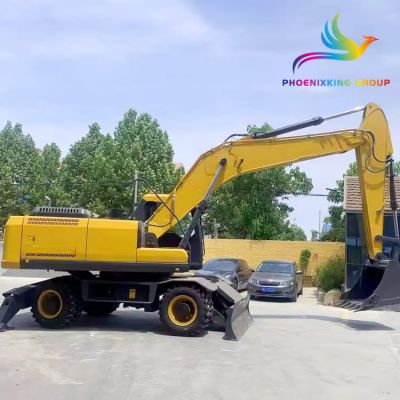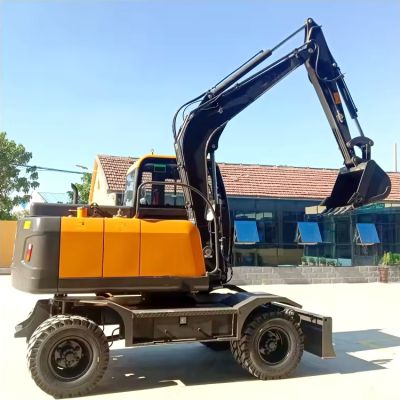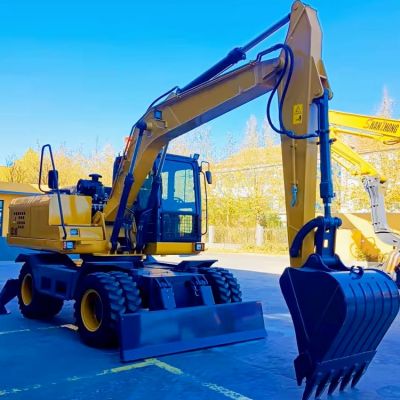Wheel Excavator
Wheel excavators are earth-moving machines that are driven by wheels and use buckets to dig materials above or below the bearing surface and load them into transport vehicles or unload them to stockpiles. They are commonly used in small and medium-sized engineering construction.
Wheel excavators are excavation machines that use tires as walking parts, referred to as wheel excavators. Wheel excavators have fast walking speeds, do not damage the road surface, can move over long distances by themselves, and can quickly replace a variety of operating devices. The maximum walking speed of foreign wheel excavators is mostly 25-40km/h, and that of domestic ones is mostly 20-35km/h. Although the working efficiency of wheel excavators is not as good as that of crawler excavators of the same level, compared with the expensive transfer fees of crawler excavators, wheel excavators have more economic advantages when frequently transferring. It is precisely because of its distinctive characteristics of mobility, flexibility, and efficiency that wheel excavators have been widely used in the excavation and movement of materials such as municipal maintenance projects, highway traffic construction, and rapid repairs.

Working Principle of Wheeled Excavator
The hydraulic tire excavator is driven by a diesel engine or an electric motor to drive two hydraulic main pumps, which generate high-pressure oil and transport it to the multi-way valve. The pilot control valve controls the oil and sends it to the relevant hydraulic actuators (hydraulic cylinders or hydraulic motors, etc.) through the multi-way valve to drive the corresponding mechanism to work. In general, the working process of the working device often requires more than two compound actions and the confluence of the boom and dipper rod actions to fully utilize the engine power and shorten the working cycle time. The travel of the wheeled excavator generally adopts hydraulic-mechanical transmission, that is, the high-pressure oil is directly driven from the central rotating body to the travel hydraulic motor to drive the gearbox, and then drives the vehicle through the transmission shaft and drive axle. The wheel excavation travel speed is generally divided into high and low gears, the low gear is the working travel speed, and the high gear is the highway travel speed.
Overall structure of wheeled excavator
The main structure of the hydraulic wheeled excavator consists of a working device, a cab, a slewing mechanism, a power unit, a transmission control mechanism, a chassis and auxiliary equipment. Among them, the cab, the power unit, and the auxiliary equipment are all installed on a fully rotatable platform, commonly known as the upper turntable. The tire chassis consists of a frame, support, gearbox, hydraulic motor, front and rear axles, tires, etc., and is assembled with a slewing body. The working device is mainly composed of a boom, a bucket rod, a bucket, a connecting rod, etc. The bucket has several types according to its working mode, such as a front shovel, a backhoe, a drag shovel, and a grab shovel. The boom mainly has a gooseneck integral bending type and a hydraulic split multi-section boom. The multi-section boom of the backhoe bucket is widely used in similar products abroad.
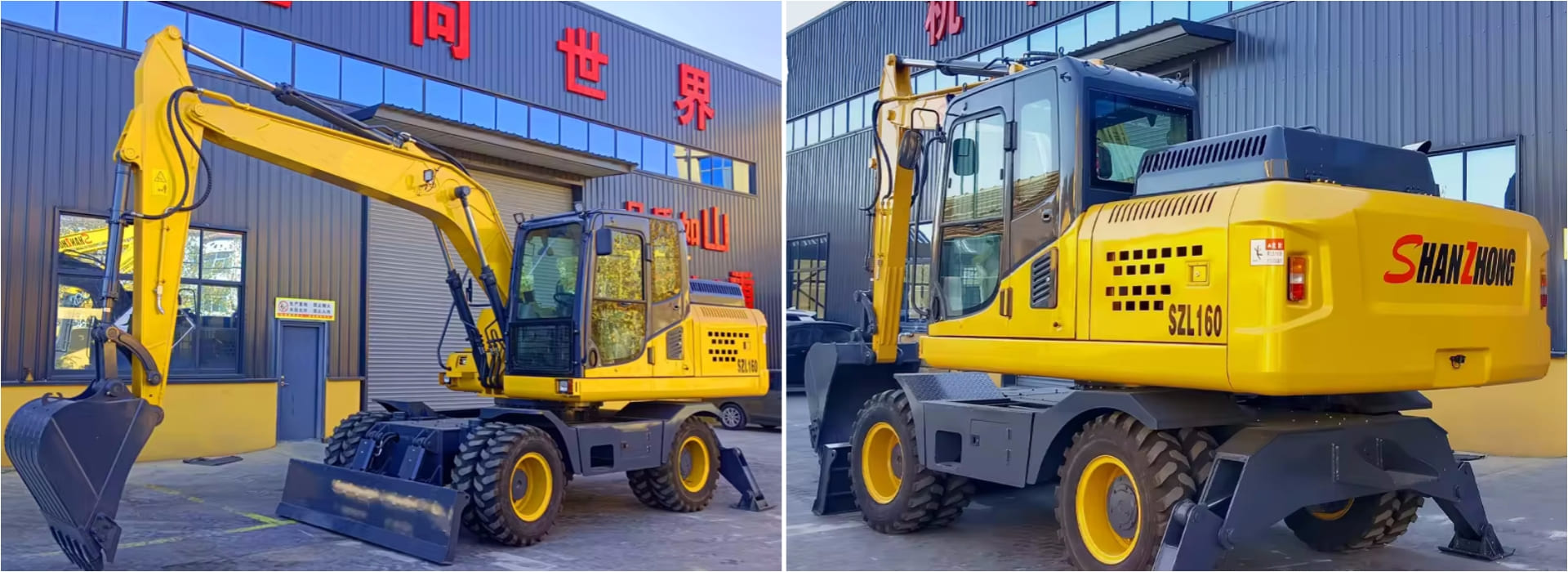
The gap between domestic and foreign wheel excavators
Looking at domestic wheel excavators, although the design and manufacturing have made great progress, due to the backward design methods and serious lack of development and manufacturing investment, there is still a clear gap compared with foreign products in terms of high reliability, safety and comfort, appearance, especially electronic energy saving and microcomputer control technology. The following are important factors affecting the quality and market competitiveness of domestic wheel excavators: (1) The stability and reliability of operation are poor, the operating efficiency is not high, the product quality is not high, and the appearance is rough. There is a big gap in durability and reliability compared with the advanced foreign excavators. The average trouble-free time and first overhaul period of domestic excavators are only half of those of foreign advanced products; (2) The key components of the engine, hydraulic system and electronic control system of domestic wheel excavators are basically imported, with high production costs, which restricts the competitiveness of domestic wheel excavators; in terms of intelligence, electronic control, automatic monitoring, electromechanical and hydraulic integration, etc., they cannot meet the needs of the domestic market; (3) There are few brands of wheel excavators to choose from, and the varieties are single. There is a lack of medium-sized and micro products, especially medium-sized wheel excavators close to 20 tons; (4) There are deficiencies in the overall structure, pipeline layout, accessory selection and engine emission standards of the excavator. The test cycle of new products is short, resulting in some quality risks of the whole machine from time to time, which cannot meet user requirements.
